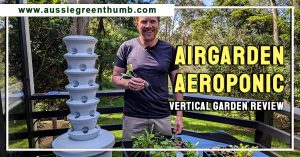The traditional gardening year doesn’t count for much in warmer parts of Australia, with winter temperatures often warm enough to grow summer crops in tropical and subtropical regions, so growing lights are an essential part of your veggie kit.
In this article, we’re going to look at how to use growing lights, when you need them, and how they can be helpful for all types of Australian gardens. We’ve also got a run-through of the best growing lights on offer right now too.
More...
Premium Choice


Product | Our Rating | Price | |
|---|---|---|---|
1. SPIDER FARMER SF2000 LED Growing Lights |  | ||
2. MARS HYDRO TS 600W LED Growing Light | |||
3. CANAGROW 35W LED Growing Light Bulb |  |
What are Growing Lights?

Growing lights are bulbs, or bulb strips, that support plant growth. Depending on the stage of growth, different wattages, different temperatures, and different spectrums are used to help germinate seeds, support healthy growth, and promote better flowering (and fruiting).
Grow lights replicate the sun’s light, and are ideal for gardeners who grow from seed, as well as supporting the development of tropical indoor plants.
When to Use Growing Lights
There are three main uses for using grow lights, so if you’re on the fence still, these are the things you need to consider when thinking about buying a grow light:
- Seed germination
- Plant development
- Tropical plants - See our list of the best Australian tropical plants
Seed germination
Grow lights are particularly useful as Australian climate allows us to grow most crops all year round, the downside of this is that many of those crops need specific conditions to germinate, like long summer days.
Using grow lights to replicate summer light levels can help stubborn plants as peppers germinate much more successfully indoors, before planting them out into the garden.
Plant development
As young plants develop, they need a minimum of six hours of sunlight per day. Most grow lights are advertised as ‘full spectrum’ grow lights, which can be a little confusing, as they are not technically UV bulbs.
What full spectrum means is that your grow light produces light in the visible spectrum, replicating the majority of the sun’s light. Older grow lights used just blue lights, but modern science has proven that plants need a mix of red, blue and white light to develop through all growth stages.
Tropical plants
Tropical plants, particularly tender annual plants, need up to twelve hours of sunlight per day. This can be tricky in south-facing homes, or through winter in southern states, so adding grow lights to your home can be a great way to give tropical plants the light they require.
Growing Lights Buyers' Guide
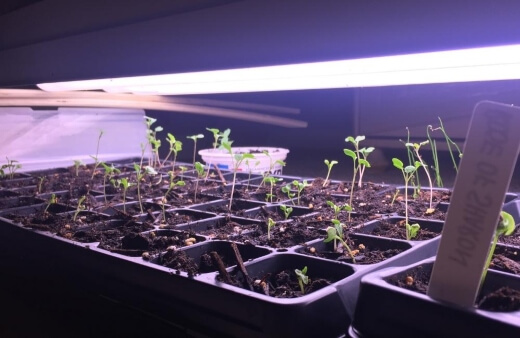
What to Look for When Buying Growing Lights
Grow lights come in all shapes and sizes, from ceiling bulbs to purpose-built lamps with frames, pulley systems, and automatic timers. Depending on your plants’ needs, there are good uses for all types of grow light.
Below we’ll explore the uses for each different type of grow light, so you can make an informed decision on the type of grow light you need.
Automatic vs Manual Grow Lights
A really basic choice is between automatic and manual grow lights. For most growers, automatic lights are the way to go. They just need setting up each season to adjust the hours of light they provide each day, and when they switch on and off.
Automatic lights are useful for commercial growers or plants that require more subtle changes through their growing season.


Get Your Free Guide:
Master Growing Australian Natives eBook
A Must Have Complete Guide for Every Australian Garden
Get Your Free Guide:
Master Growing Australian Natives eBook
A Must Have Complete Guide for Every Australian Garden
What is the Best Wattage for Grow Lights?
Growing lights come in a range of powers, and as you can probably guess, the stronger the wattage, the stronger the light. To compare wattage to sunlight, sunlight is around 1370 watts per square metre.
It might seem like an obvious choice to go for a 1370W growing light, but there are some very specific considerations to make first:
- Distance from lamp to crop
- Lamp coverage (per m2)
- Current ambient light levels
- Lamp temperature
- Crop requirements
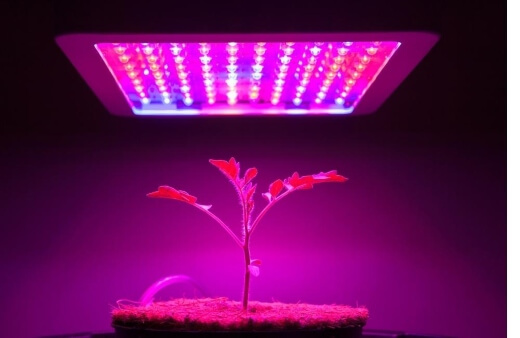
The first consideration is distance. If your lamp has a coverage of 1 m2 and is hung correctly above a crop, it seems obvious to go for a 1370w lamp to directly replicate sunlight.
However, unless your plant is in otherwise complete darkness, there will be some current ambient light available through the day, meaning a 600w light is probably sufficient.
For dark, south-facing rooms, higher wattages are advisable, but not essential. High wattage growing lights have hotter lamp temperatures than sunlight on most days, so shouldn’t be placed within 1m of a plant to avoid burning it.
There are also safety considerations, particularly with older styles of halogen growing lights. And finally, think about the requirements of each crop.
If you’re growing plants that like their heads in the sun, but feet in the shade, light sweetcorn, then 600w is completely fine. For tropical houseplants in east-facing rooms, they’re often happier in slightly shaded places but need 12 hours of indirect light per day.
That can be hard in anything other than south-facing homes, so adding a low-level 300w ceiling bulb to a room to switch on in the evenings helps give them the right light levels to extend their sunlight hours.
Red/Blue vs Full Spectrum Growing Lights
OK, so what exactly is ‘full spectrum’? Well, essentially it’s just a marketing term to sell grow lights, as it’s far from the full spectrum of the sun’s light.
Grow lights do not replicate UV or UVA light, and they certainly don’t produce infrared in the same quantity as the sun. What full spectrum lights give us is the full spectrum of visible light. Meaning, everything you see in a rainbow, plus white.
Seedlings need a mix of blue and white light to develop shorter stronger growth on better roots. As plants develop they need red light to promote flowering, and a mix of blue and white in lower levels to support photosynthesis, leading to healthier foliage.
The other colours in the light spectrum help provide balanced light levels which prevent plants from growing leggy in search of natural light.
Different Types of Growing Lights
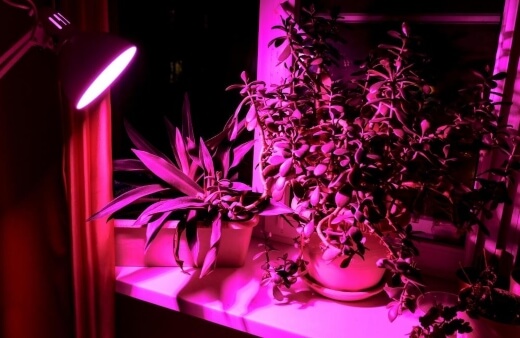
There are a few different types of grow lights in terms of form and function, once you’ve chosen your wattage, temperature and spectrum requirements.
These include; LED growing lights; Halogen growing lights; ceiling grow bulbs; hanging grow lamps.
Halogen Growing Lights
Halogen growing lights are the traditional grow lights found on most commercial farms, but for home use are generally considered pretty unsafe, and very inefficient.
Avoid halogen growing lights if you can, as they get hot, waste electricity and are harder to regulate.
LED Growing Lights
LED growing lights are safer than halogens in almost every way, as well as being much more energy-efficient. For example, the average LED grow light will use 15W of electricity to produce the equivalent of 200W of full-spectrum light, which would take a halogen bulb 200W to produce. That’s a massive saving on your energy bills.
Ceiling Grow Bulbs
Ceiling grow bulbs are a great way to add some extra growing light to your plants’ environment, without having hanging lamps placed around the house.
If you do choose a ceiling growling light definitely choose an LED bulb as they tend to come with more features, and are often smart bulbs too, so can be programmed into smart homes.
Hanging Growing Lamps
Hanging grow lamps are a more efficient way to light your crops, as they direct their light to specific areas, and have a greater surface area, meaning more full-spectrum light reaches your plants.
Hanging grow lamps are more expensive than ceiling bulbs, but for seedling development and tropical plants are a wonderful way to get higher yields.
For some indoor growers, hanging LED growing lights are essential as they can be used with indoor greenhouses, and have their heights adjusted as plants grow.
How to Use a Growing Light
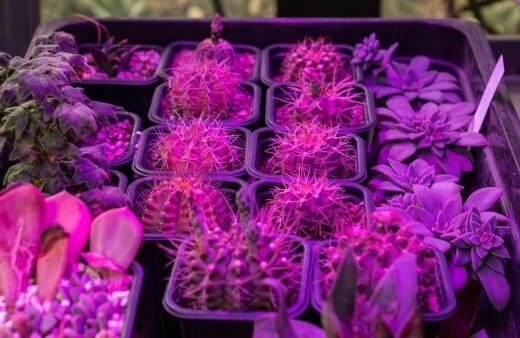
Grow lights should always be placed at least 2ft away from plants at any growth stage. Even Led bulbs produce heat which can be enough to dry out seedlings and even burn them.
As plants grow, their foliage should always be kept away from direct contact with growing lights to avoid them burning. For any type of grow light, timing is everything, so try to provide the light that replicates your average summer light levels.
Grow lights should not be used as plant heaters, so try to focus on lighting, not heating.
Growing Lights Safety Tips
Smart grow lights are easy to forget about, but please make sure you have contingencies in place when you go on holiday as they do use a lot of energy and can overheat.
Grow tents in particular can develop humid environments if fans break down, or vents get clogged, so it’s important to check growing environments regularly to avoid overheating.
Reviews on Best Growing Lights for 2025
1. SPIDER FARMER SF2000 LED Growing Lights

SPIDER FARMER SF2000
2000W grow lights are hard to come by, but if you need one, you need one. These powerful full spectrum grow lights are insanely productive, producing more full-spectrum light than the sun when hung 2 ft. above plant canopies.
The downside with these lamps is that when you’re growing just a few crops for yourself, you’re going to have to pay through the nose on your electric bills. On top of that, these lamps are expensive too, so you’ve got upfront costs, as well as ongoing costs, which might put you off.
The reality is though, if you’re growing indoors, in dark conditions, the additional power of the 2000W full spectrum lights mean that your plants are receiving low-level heat, and well-regulated light, and will develop just as well as they would outdoors in the full summer sun.
Pros
Cons
2. MARS HYDRO TS 600W LED Growing Light
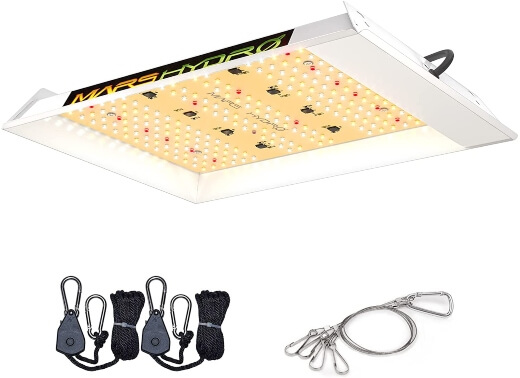
MARS HYDRO TS 600W
For 99% of growers, 600W lamps are the lights to go for. Assuming you’re growing things in rooms with some ambient lighting, 600W is more than enough to support the early development of plants, and help them develop into maturity. Grow tents and dark rooms are a must for some growers, but in reality, 600W is usually enough.
This simple growing light uses its heat through even distribution, rather than venting it away, thanks to better control, and a clever casing making it much safer for long term use.
Pros
Cons
3. CANAGROW 35W LED Growing Light Bulb
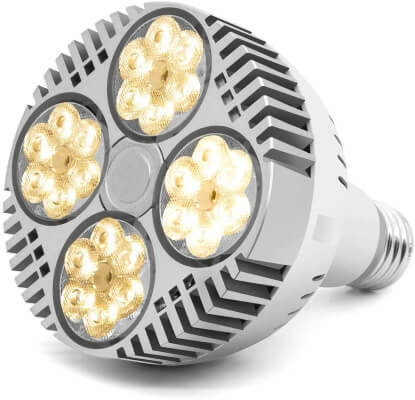
CANAGROW 35W
CANAGROW are designed to support growth rather than being the only light source for plants. These 35W grow lights provide full-spectrum lighting which is beneficial to plants, but also for us as it helps produce more natural light conditions around the home that can help to boost your mood.
While these low-level full spectrum lights aren’t designed as SAD lamps and don’t produce UV or infrared, their even distribution of the light spectrum helps create healthier places to be.
Pros
Cons
Top Pick Growing Lights in Australia
Premium Choice Growing Light


Souce: amazon.com.au
For anyone growing professionally, or as a serious hobby, these 2000W lights are unbeatable for light efficiency, and plant management, but they do come at a cost, both upfront, and ongoing, as they use 200W of electricity to power their 2000W equivalent lamps.
If you’re serious about growing indoors from seed to maturity, then these really are the best growing light you can buy.
Growing Lights Frequently Asked Questions
Can you use regular LED lights to grow plants?
Any LED light can be used to support plant growth, and plants respond to every part of the light spectrum, but the light produced by these bulbs is generally white and blue only, which will lead to leggy plants that are seeking out other parts of the spectrum from natural light. LED growing lights are really the only option for reliable growth.
What colour light is best for growing?
Red, blue, and white are the most important parts of the light spectrum for growing plants, but full-spectrum lighting gives more natural conditions than red, white and blue only.
How long should growing lights be on?
Growing lights should be left on a maximum of 18 hours per day as plants need time to rest in order to develop properly. Plants given 24 hours of full-spectrum lighting will produce unreliable crops, and flower irregularly, or limply.
Where should growing lights be positioned?
Growing lights should be positioned about 2ft away from the top of your plants. For seed germination, 1ft from the soil is fine as it gives maximum lighting, but lights should be moved higher after germination to avoid the soil drying out too quickly between watering.
Check out our hands on reviews of indoor grow light stands and shelves to see if its what you are looking for.
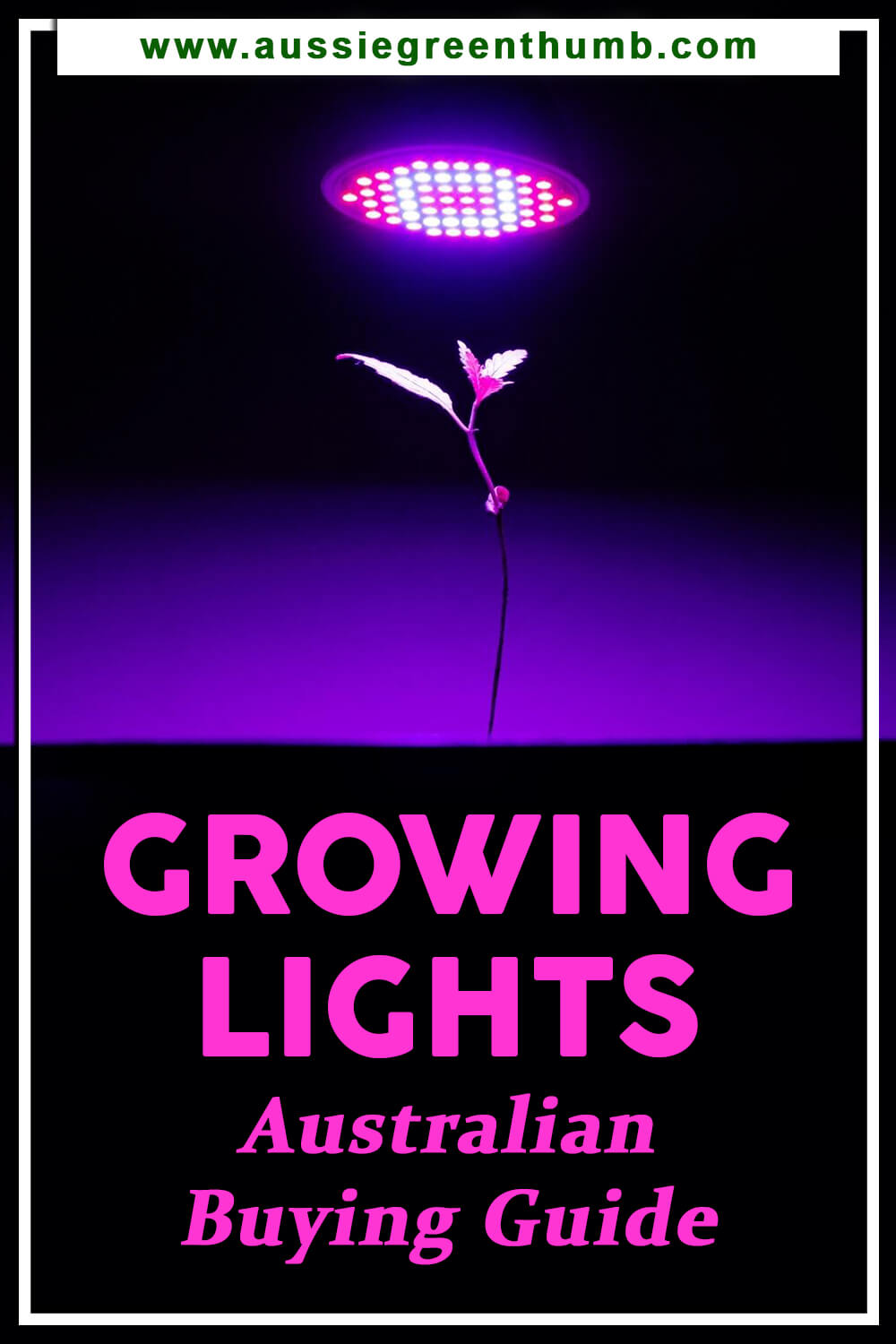
Control Plant Growth with the Help of Growing Lights
The best time to use a growing light is always in winter, giving you a great head start on those plants and crops that typically thrive in summer. Being able to germinate plants in a controlled way gives you far greater chances of success than relying on unreliable winter weather.
For some plants that require specific shifts in daylight, growing light really is the only option too, as they can be programmed, or manually turned on and off to provide 4, 6, 8, 12, or 16 hours of daylight per day.
Published on June 19, 2022 by Lorri Hopkins
Last Updated on December 27, 2025




